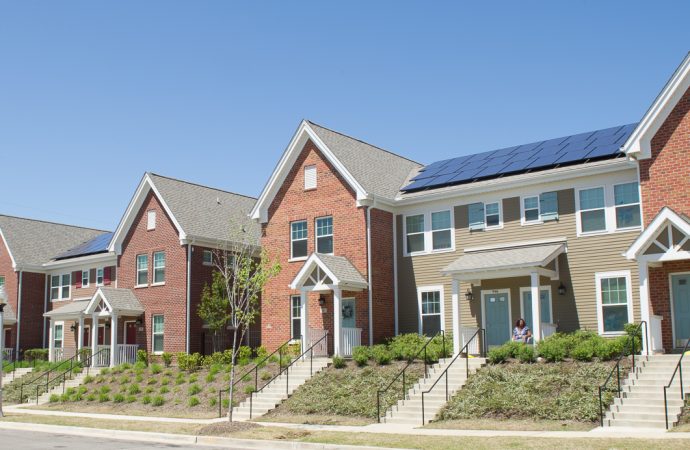Affordable Housing Solutions: Bridging the Gap for Millions of Americans The pressing issue of affordable housing continues to challenge millions of Americans. This article dives into comprehensive and innovative solutions that bridge the gap and make homeownership accessible to a broad cross-section of the population. The Affordable Housing Challenge Accessible and affordable housing is not
Affordable Housing Solutions: Bridging the Gap for Millions of Americans
The pressing issue of affordable housing continues to challenge millions of Americans. This article dives into comprehensive and innovative solutions that bridge the gap and make homeownership accessible to a broad cross-section of the population.
The Affordable Housing Challenge
Accessible and affordable housing is not just a desire but a fundamental need for many Americans. The American dream of owning a home is deeply ingrained in the nation’s psyche. However, this dream is slipping out of reach for many, primarily due to rising housing costs, stagnant incomes, and the limited availability of affordable housing options. Addressing this challenge is not only a matter of economic significance but a moral imperative to ensure that the dream of homeownership remains attainable for all Americans.
Home Restoration: A Path to Affordable Housing
One innovative strategy that has been gaining traction in addressing the affordable housing crisis is home restoration. This approach involves the revitalization of neglected or underutilized properties, transforming them into affordable and habitable homes.
Maximizing Existing Resources
One of the most compelling aspects of home restoration is its ability to maximize existing resources. Neglected homes can be transformed into desirable living spaces at a significantly lower cost compared to constructing entirely new homes. This cost-effectiveness reduces the financial burden on homeowners, investors, and organizations seeking to provide affordable housing solutions.
Preserving Community Character
Home restoration projects often go beyond economics. They actively preserve the character and history of communities, making them more attractive. This approach not only benefits current residents but also enhances property values and maintains the charm and identity of neighborhoods. It helps create a sense of belonging and pride within communities.
Table 1: Benefits of Home Restoration
| Benefit | Key Advantages |
|---|---|
| Maximizing Resources | Lower investment compared to new construction. |
| Preserving Community | Maintains community character and history. |

Image by: https://www.thebalancemoney.com/
Government Initiatives
Governments at various levels have recognized the vital role of home restoration in addressing the affordable housing crisis. They are taking action by implementing policies and providing incentives to encourage the restoration of existing housing stock.
Tax Incentives
Tax incentives in the form of deductions or credits for restoration projects are crucial motivators for homeowners and investors to undertake these initiatives. These incentives significantly reduce the financial burden associated with home restoration, making it a more attractive option.
Streamlined Regulations
Simplifying regulations and permitting processes for restoration projects is a critical step governments are taking. This simplification streamlines the transformation of homes, making it more accessible for homeowners to navigate the process.
Table 2: Government Initiatives for Home Restoration
| Initiative | Key Actions |
|---|---|
| Tax Incentives | Deductions and credits for restoration. |
| Streamlined Regulations | Simplified permitting processes. |
Community Engagement
Community involvement is a critical aspect of the success of home restoration projects. Local organizations, nonprofits, and volunteers play a significant role in these efforts.
Community-Based Projects
Community-based restoration projects bring residents together to improve housing conditions. They don’t just restore homes; they also foster a sense of unity and pride within neighborhoods. This community engagement showcases the power of people coming together to drive change and create affordable housing solutions.
Nonprofit Initiatives
Nonprofits dedicated to affordable housing have expanded their focus to include restoration projects. They acquire homes in need of repair and undertake the necessary renovations to ensure they remain accessible to those in need. This approach not only adds to the affordable housing stock but also creates a sustainable path to homeownership for many.
Table 3: Community Engagement in Home Restoration
| Community Involvement | Key Aspects |
|---|---|
| Community-Based Projects | Unites people in improving housing. |
| Nonprofit Initiatives | Acquire and restore homes for accessibility. |
The Path Forward
Bridging the gap for affordable housing is a collaborative effort that involves governments, communities, and homeowners. By maximizing existing resources, preserving community character, and leveraging government support and community engagement, we can make significant strides in addressing the affordable housing crisis and providing affordable homes to millions of Americans.
Conclusion
Home restoration is a potent and multifaceted strategy for bridging the gap to affordable housing. By harnessing the potential of existing resources, preserving the essence of communities, and creating cost-effective housing solutions, we can make homeownership accessible to millions of Americans. The path forward is one of collaboration, innovation, and a shared commitment to making affordable housing a reality for all. This vision encompasses the restoration of homes—a key step in making homes affordable for millions and bridging the gap that has challenged the American dream of homeownership.

















Leave a Comment
Your email address will not be published. Required fields are marked with *